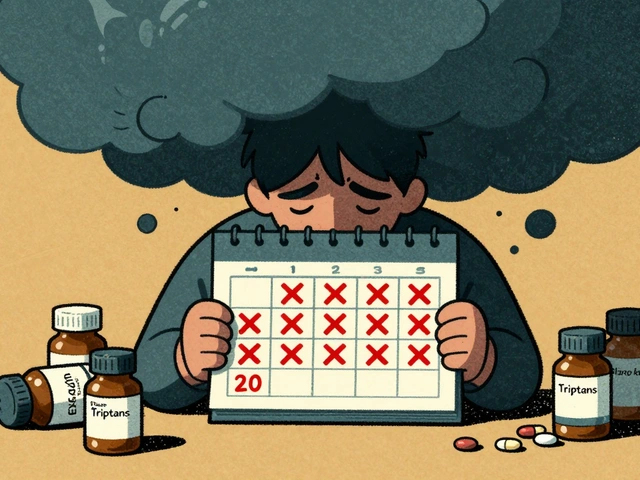If you’ve been following HIV news, you’ve probably heard about the next generation of drugs that promise fewer pills and smoother life. These modern HIV drugs aren’t just a tweak of older meds – they’re built on better science, longer lasting action, and fewer side effects. Below we break down the key players, how they work, and what you should ask your doctor.
The biggest shift in recent years is the rise of two‑drug and long‑acting regimens. Instead of taking three or four pills a day, many patients now stay covered with just two pills or a monthly injection. Bictegravir (part of Biktarvy) and Dolutegravir are integrase inhibitors that lock the virus out of the cell’s DNA. They’re praised for strong resistance barriers and low toxicity.
Another breakthrough is long‑acting cabotegravir + rilpivirine. The combo comes as an injection every 4 or 8 weeks, turning daily pill fatigue into a quick office visit. Studies show similar viral suppression rates to daily pills, plus a big boost in adherence.
Two‑drug regimens like Dolutegravir + Lamivudine (Dovato) cut the pill count while keeping the virus suppressed. This option works best for people without prior resistance and who have stable viral loads.
Before you switch, ask your provider about your current viral load, any past resistance, and other meds you take. Drug‑drug interactions can still happen, especially with cholesterol pills, antidepressants, or hormonal contraceptives. Most modern drugs have fewer interactions, but a quick check saves headaches later.
Watch for side effects early on. While many patients report mild headaches or fatigue, serious reactions are rare. If you notice persistent nausea, rash, or mental health changes, reach out right away – early management keeps you on track.
Keep your appointments for lab tests. Even with long‑acting shots, doctors need to see your viral load every few months to confirm the treatment is working. Missing a test can delay adjustments and affect long‑term health.
Finally, consider cost and insurance coverage. Some newer drugs have higher list prices, but many insurers treat them as first‑line therapy. Ask your pharmacist about patient assistance programs – they can shave off a lot of the out‑of‑pocket cost.
Modern HIV drugs are changing the game by simplifying daily life and improving outcomes. Whether you’re starting treatment or thinking about a switch, the right regimen can make a huge difference in health and confidence. Talk to your doctor, stay on top of lab checks, and enjoy the smoother path these newer meds offer.

Trace the journey of HIV from its 1980s discovery to today’s advanced antiretroviral treatments, highlighting key milestones, scientists, and breakthroughs.

Medication overuse headaches are a hidden cause of chronic pain, triggered by too-frequent use of common painkillers. Learn how to identify them, safely stop the cycle, and find lasting relief with proven treatments.

Compare Penegra (sildenafil) with leading ED alternatives like Viagra, Cialis, Levitra, and Stendra. Learn differences in onset, duration, side effects, and price to find the right medication.

The nocebo effect explains why people feel side effects from medications even when the drug has no active ingredient. Expectations, not chemistry, often drive these reactions - and they're more common than you think.

Explore how support groups improve life for those with partial onset seizures, covering benefits, types, finding options, and tips for active participation.

Explore Avanafil's journey from discovery to FDA approval, covering research, trials, regulatory hurdles, and its impact on erectile dysfunction treatment.